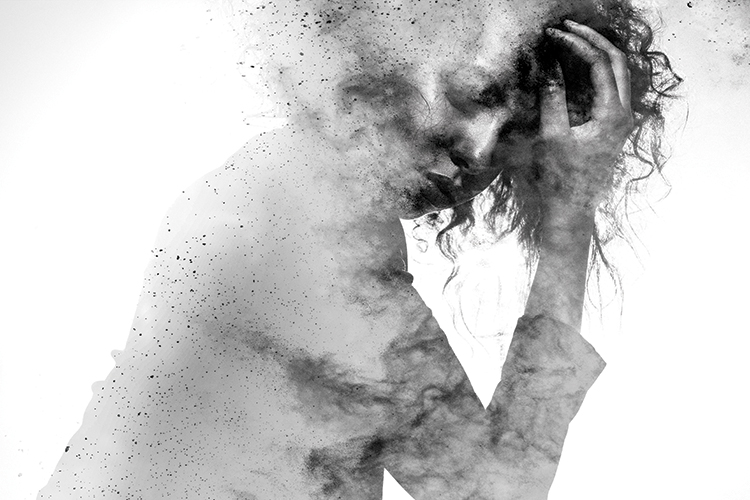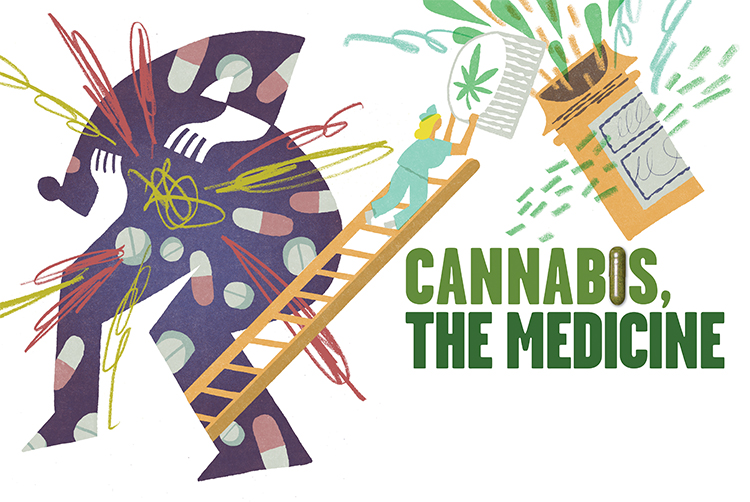Is it social media? Smartphones? Or are we just seeking treatment for what was already there?
By John Henry Scott
If you’ve been reading the headlines lately, you might wonder if America is suffering from an anxiety epidemic. Few of these articles agree on a cause—speculations include smartphones, the results of the 2016 election, and grown children moving farther and farther away from their parents—but most seem to allude that anxiety disorders are becoming more prevalent, especially among the generation of kids raised from birth with social media profiles. ¶ Statistics from the Anxiety and Depression Association of America show that anxiety disorders are now the most common mental illness in the country, affecting 40 million Americans over the age of 18 every year.
But are we more anxious, or do we have a more defined vocabulary to describe our anxiety and better ways to diagnose it? Dr. Edna Foa, founder of the Center for the Treatment and Study of Anxiety (CTSA) at the University of Pennsylvania, doesn’t believe that these disorders have become more widespread in her nearly four decades of anxiety research. Instead, Foa attributes the rise in the number of anxiety-related diagnoses to an increased willingness among those suffering to seek treatment.
“When I started in this field, people with OCD were reluctant to tell anyone, even hiding from their families,” she said.
At the time, there was a serious stigma surrounding mental disorders. People suffering from conditions such as generalized anxiety disorder (GAD), obsessive compulsive
disorder (OCD), post-traumatic stress disorder (PTSD) and panic disorder also dealt with a very real fear of being labeled “crazy” and perhaps even institutionalized.
According to Foa, once it was discovered that symptoms of some of these disorders could be drastically reduced through treatment, many more people started coming forward. Today, the CTSA clinic treats all of the disorders mentioned above as well as many specific phobias.
“It began to be mentioned in the media and became part of societal knowledge,” Foa said. “Pharmaceutical companies were very much a part of this exposure because they wanted to sell the medication.”
Pharmaceutical companies started anxiety disorder awareness programs to increase demand for their medication. A happy side effect of these money-making ventures was that the stigma surrounding mental illness began to erode.
“I feel like anxiety has always existed but it’s more recognizable now that we have more communication about it,” said Alex Karaba, 27. “It’s something you’re born with.”
Karaba, a restaurant server in Center City, was diagnosed with GAD last year, after struggling with symptoms for years.
“When you have an anxiety disorder, you don’t talk about it,” he said. “You just assume that’s what being alive is.”
To treat his disorder, Karaba meditates and practices yoga. The routine helps him in his day-to-day, but he admits he feels he’s not doing enough and is considering going back to therapy.
“Simply having a conversation about anxiety helps,” he said. “Saying things out loud, just explaining how it feels gives me a little more perspective than stewing inside of my head.”
While more people are seeking treatment, ADAA statistics tell us that only 36.9 percent of the 40 million American adults suffering from an anxiety disorder receive treatment. This figure may have to do with the difficulty of finding, accessing and affording the appropriate course of treatment.
Katie Harshaw, 24, is a social worker in Morrisville, Pennsylvania. She suffered with GAD and PTSD for years until she finally found a medication that allowed her to function in daily life. Prior to finding the right treatment, she struggled with drug addiction, a result of self-medicating. As a child, her anxiety disorders kept her out of school.
For those seeking treatment, Harshaw recommends having a support system, which she defines as “at least one person that you can turn to when you are struggling.” She also recommends keeping busy as a way of warding off unproductive thoughts. Above all, she urges those suffering to seek medical attention.
“I would not recommend treating anxiety at home,” she said. “If you have anxiety or panic attacks, see a doctor. Don’t self-medicate. Get help.”
Dr. Thea Gallagher, clinic director at CTSA, echoes Harshaw’s sentiment.
“If you have an anxiety disorder or you think you have one, get to a center that does good exposure work and get an evaluation,” she said. “It’s usually a pretty focused, short and goal-oriented protocol toward getting you better.”
The treatment process at CTSA goes beyond talk therapy and medication. Instead, clinicians and researchers practice treatment methods such as exposure and response prevention (ERP) and prolonged exposure therapy (PE).
“The most evidence-based, robust treatment for anxiety disorders is exposure therapy,” said Gallagher. “It’s of the mindset that the only way through anxiety is through, and that fear can be treated by facing it.”
Exposure therapy puts a patient into situations that would normally trigger an anxious response. Clinicians guide patients through these situations and help them confront their fears and anxieties. Foa used the example of a patient with an obsession with cleanliness. Such a patient would be placed in a less-than-sanitary environment and then prevented from washing her hands for a prolonged period.
This practice may seem a bit cruel, but it helps break down the harmful associations with cleanliness within the obsessive mind. The patient discovers that, while regular handwashing is healthy, failure to wash one’s hands does not result in catastrophe. Cause and effect become more realistic in her mind.
The CTSA also uses exposure to treat PTSD, asking patients to revisit their traumatic memories. It’s somewhat more controversial in the medical community, but, according to Foa, the results have been highly effective. When going back into their traumatic memories, patients often find themselves remembering details that change the way they think about the memory, sometimes removing guilt or blame.
“We want to break down those barriers,” said Gallagher. “A lot of the work we’ve been doing is showing that this treatment works. Research shows exposure therapy is the most effective treatment.”
However, with generalized anxiety, ERP is not as effective because there are fewer specific stressors to target. People suffering with GAD are more prone to obsessively worry about hypotheticals such as being fired from a job or the death of a family member. Due to the intangible nature of these worries, the CTSA uses a modified exposure process for GAD patients.
Gallagher told the story of a GAD patient who was having an outdoor wedding. The patient was consumed by obsessive worrying over whether it would rain on her wedding day. Clinicians helped the patient run through a scenario in which the wedding was rained out. Slowly, the patient began to be able to accept that outcome as a possibility and move past worrying about it. This course of treatment is rooted in mindfulness: identifying anxious thoughts, allowing them to come into your mind and then calmly moving past them.
“GAD treatment is about helping people see that there is really no correlation between worry and outcome,” said Gallagher. “A lot of anxiety is your alarm system going off, telling you there’s a fire in your house when it’s really burnt toast. We want to help patients see that.”
Doctors Foa and Gallagher encourage anyone struggling with an anxiety disorder to reach out to CTSA. They are currently in need of people struggling with PTSD for upcoming research studies. The best way to contact the center is by phone at 215.746.3327.








